Being in Place, Unseeing Ourselves
On developing a "feeling sense" of the Twin Cities Army Ammunition Plant, an abandoned hazardous waste site in Arden Hills
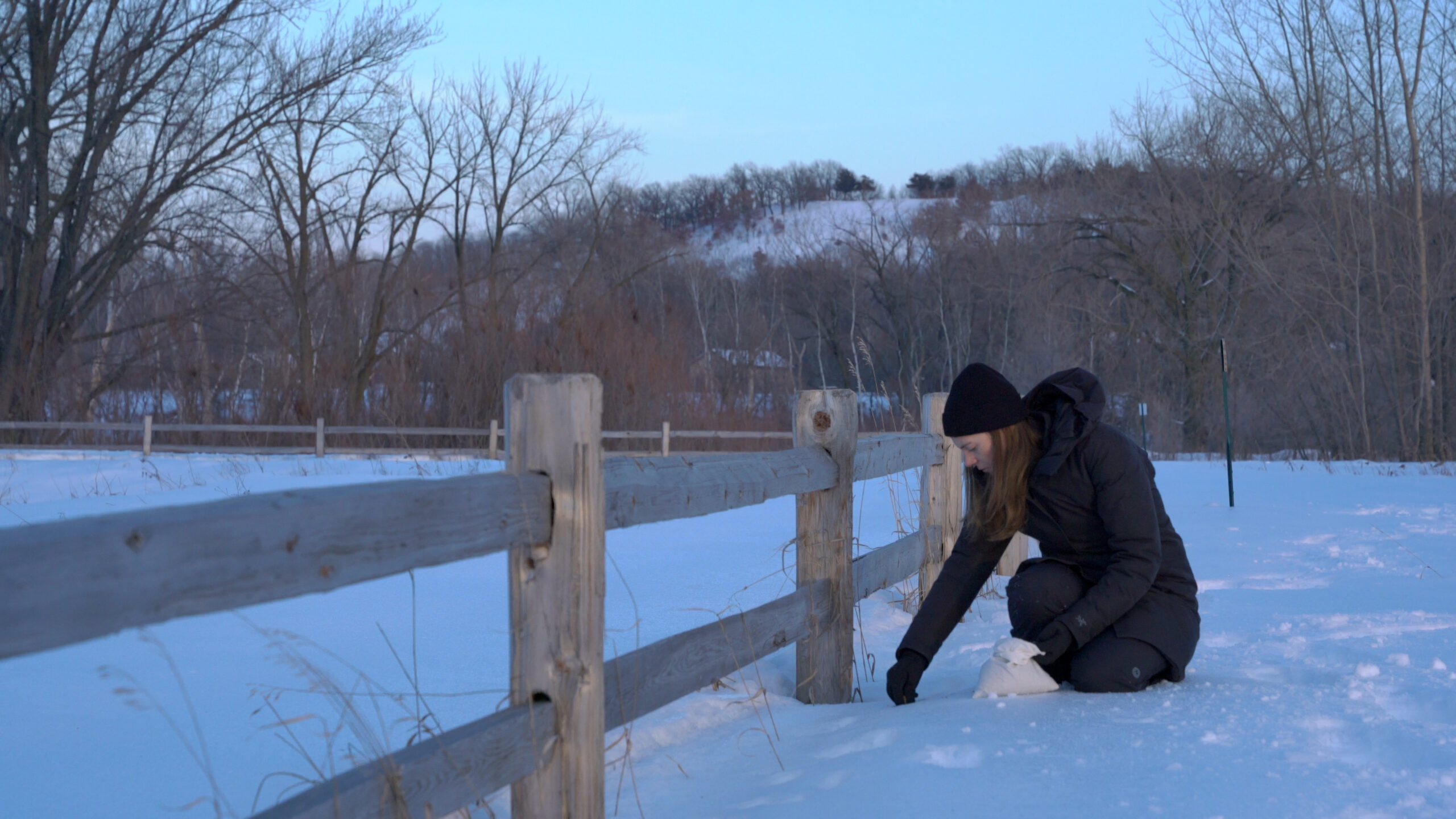
GREEN “VOID”
As the climate crisis looms and our ecosystems transform, I have shifted my artistic practice to be “in place,” asking of the sites I make work in: what was and is here? What are we losing, and how can we regenerate? These curiosities have brought me to the field of landscape architecture, where I study Earth systems within the lens of design, and examine the many mistakes we have made in relating to this planet. It was through examining these mistakes that I came across data about Superfund sites in Minnesota—places that are highly contaminated due to improper hazardous waste management—and, subsequently, the Twin Cities Army Ammunition Plant (TCAAP).
If you look at an aerial map of the Twin Cities, you’ll notice a large “void” in Arden Hills, east of I-35W and north of Highway 96. Spanning over 2000 acres—roughly the size of downtown Saint Paul—it’s a place without public roads, commercial development, or residential homes. In my 15 years of living in Minnesota, I had never heard of such a place, so I drove to TCAAP’s green digital void.
I first circled the massive perimeter of chain link fence and barbed wire, complete with signs warning against entrance. I parked my car in a nearby neighborhood and walked along the exterior fence to watch the sunset over the snow-covered marsh. Stunned by the light that sat on the cattails and crooked oaks, I closed my eyes and imagined the ground below—the kind of composition that might be there in the soil, fused with human-made compounds. I walked back to my car with frozen fingers and a mind full of questions. This was the beginning of an investigation about understanding a complicated landscape—its happenings, its moods and possibilities. How has this place unfolded over time? What lives here, and what is yet to come? Such a landscape can never be fully visualized or understood. But I hoped that, by building familiarity with it, I might create a feeling sense with this land.
THE PLUME
In the span of 82 years, TCAAP has been a site of deep complexity with intertwined social, technological, political, biological, and geological entanglements. TCAAP was a government-owned, contractor-operated producer of small firearms ammunition and war materials. Manufacturing operations from 1942-1981 heavily impacted the land, causing groundwater, soil, sediment, and surface water contamination; it was placed on the Environmental Protection Agency’s Federal National Priority List in 1983 due to the lasting presence of forever-yours PCBs, VOCs, 1,4-Dioxane, explosive solvents, lead, and other heavy metals. Its contaminants spread far beyond the chain link fence, infiltrating as a “plume” of chemicals in waterways such as Round Lake and the city of New Brighton’s groundwater.1
The way we approach the land has a massive influence on water quality, which affects human and non-human life forms (as of last year, 2904 water bodies in Minnesota are considered impaired).2 These stories about Superfund sites are all too familiar—damaged and threatened ecosystems are part of America’s industrial past and present. The pace of land development has only intensified and global extraction has continued to cause damage to habitats and the places people call home. Here in the Midwest, we’re often distant from the more “sensational” climate crisis effects, virtually viewing images of California’s atmospheric river flooding, wildfires, and extreme drought. We have water, yes. We have impaired water—something rather invisible to us, silently infiltrating our Earth’s depths.
TEMPORAL SORCERY
A landscape is a record of reality-generating activity… It is a chronicle of life and dwelling. That is to say, the visible phenomena making up the landscapes have the invisible constitutive activities inescapably embedded within them.
Barbara Adam, Timescapes of Modernity3
In making places like TCAAP, we commit a sort of “temporal sorcery,” defined by landscape architect Brett Milligan as a way of tricking time by “altering environmental rhythms and choreographing material flows.”4 Through the contamination of TCAAP, humans infiltrated a soil system that had been building over thousands of years, speeding up the degradation of land and soil, and ultimately affecting the space and “flow” of time.
Due to this contamination, residential development was out of the question for years, which left the landscape to “do its thing.” The prohibition of commercial and residential development has made the site a refuge for birds—which I found to be a rather beautiful anecdote. Its grassland, wet prairie, shrubland, oak woodlands, and aspen stands—as well as 350 large nest boxes that were installed there in the early 1990s—create a home for them. It’s been officially deemed an Important Bird Area (IBA) by the St. Paul Audubon Society and, outside of the Mississippi River corridor, is one of the largest IBAs in the Twin Cities.5 Birds and other forms of wildlife have been known to shift to open, unused, and often contaminated spaces. These liminal spaces—between health and harm, “wild” and controlled—display nature’s ability to adapt and thrive in places left behind.
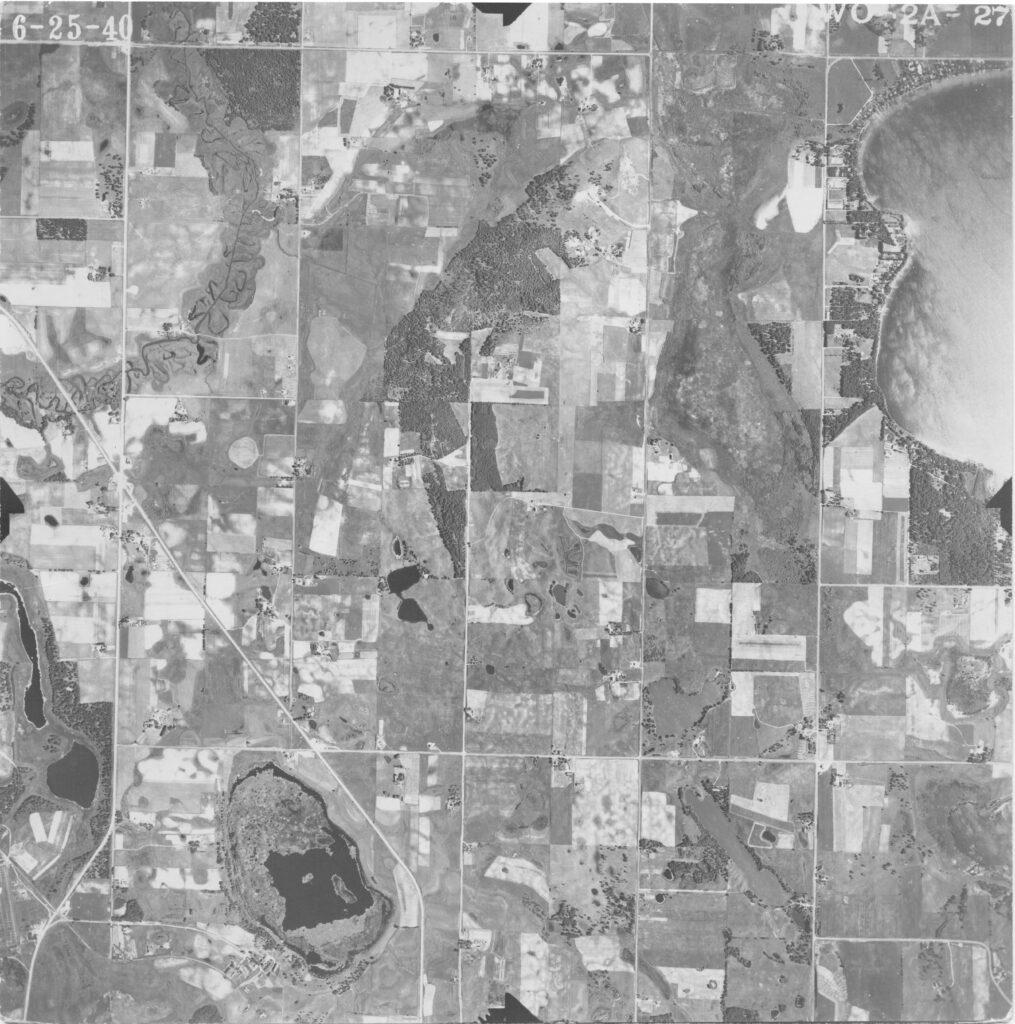
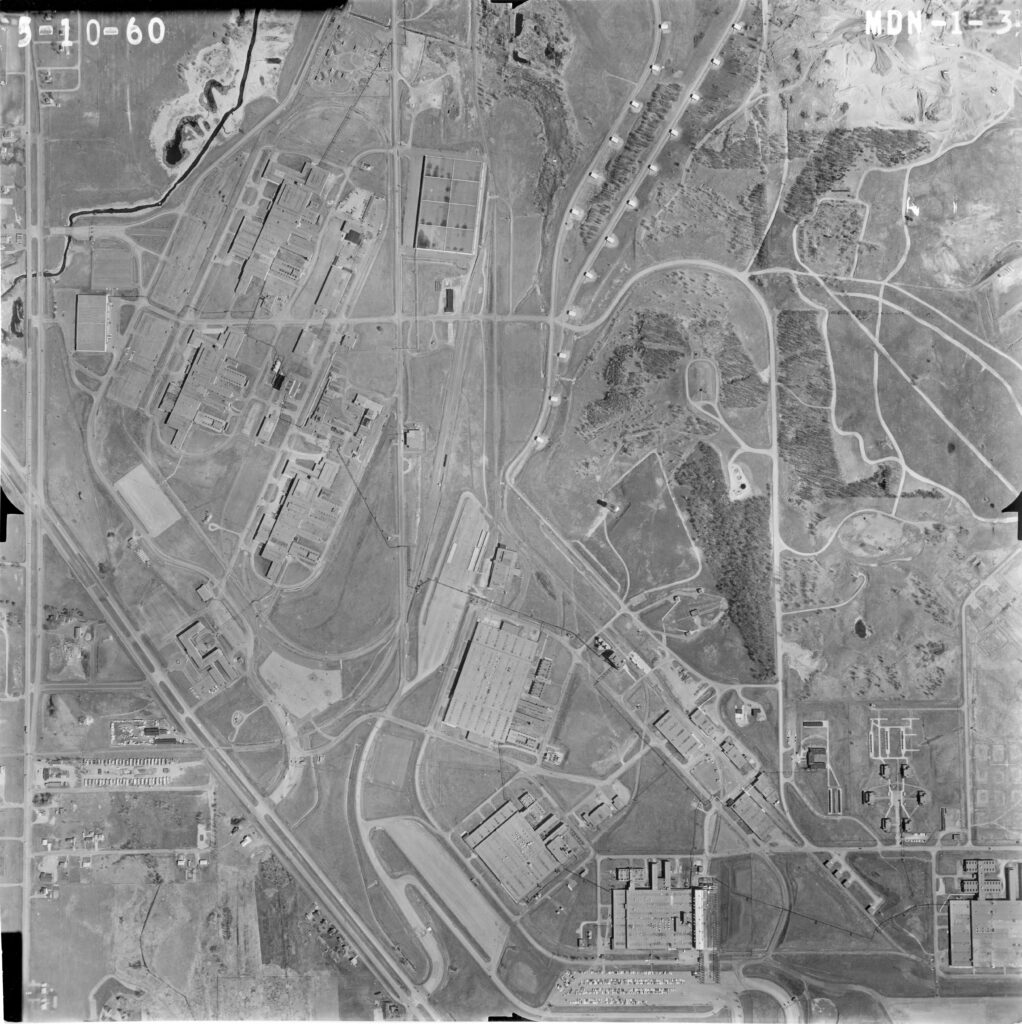
In researching TCAAP, I’m intellectually realizing this landscape’s history. I study complicated groundwater impacts, chemicals, and land management practices. When sifting through linear timelines and future development plans, I find that a major portion of TCAAP’s remediated land is on track for urban development. The future “Rice Creek Commons” will create “economic prosperity”; when the soil and groundwater are fully remediated, the land will be “revitalized, and brought back to the tax rolls.”6
Humans have sped up this landscape’s degradation. When we attempt to “fix” it now, we are trying to rewind time in a sense. This proposed fixing is ultimately for the sake of human development and desires, altering space and time yet again. I think of the impact that the development will eventually have on the birdland, and how the ecology that has made its way through disruption is subject to a loss in identity. I think of Ojibwe and Dakota peoples who occupied and tended to this land before the Treaty of 1837, and of the 45 families who lived on the site before the government gave them a month to vacate after they purchased the land for war materials. I think of the impact this place had during World War II, and the women and people of color who lead its operations. I think of the bird refuge, of the 100-year-old oaks, and the soil. There is already so much here.
DELUSION OF SEPARATENESS
The world is not a problem to be solved; it is a living being to which we belong. The world is part of our own self and we are a part of its suffering wholeness. Until we go to the root of our image of separateness, there can be no healing. And the deepest part of our separateness from creation lies in our forgetfulness of its sacred nature, which is also our own sacred nature.
Llewellyn Vaughan-Lee, Spiritual Ecology: The Cry of the Earth7
I recently heard someone say, regarding the climate crisis, that we are cutting off the limb of the tree branch we are sitting on. I can see where they are going—but for me, we are the tree, too. With TCAAP, we see continued harm in the soil ultimately becoming a part of our lakes, waterways, vegetation, and eventually the air we breathe. In general, Western culture regards our body as our own, our selves as separate and independent from nature. But we merge, always. Who can determine where we begin and where we end?
Many Indigenous belief systems and Eastern philosophies are centered around ideas of an intelligent Earth, our actual kin. In Western colonial culture, we tell stories of hierarchy and dominance, our connection to the land lost long ago. As the brilliant Winona LaDuke (Anishinaabe) wrote, “This is the difference between worldviews, one that views a land as a rich ore body, or a playground, and another that views it as a source of great spiritual and cultural wealth… This is the story of the time in which we find ourselves.”8 People continue to distort structures of space and time that they and non-human life forms occupy in favor of extraction. How do we dissolve the delusion of separateness between nature and culture and make our way back to the Earth? Although we cannot return to an earlier time, perhaps we might “hear” the soil’s poetry and find the invisible relationship beyond the debris and waste. Perhaps it’s about embracing the underlying humility and coming to terms with the fact that anthropocentrism isn’t working for all. Perhaps it’s about healing and connecting to places that are non-extractive, turning away from “land as ore body playground.”
FEELING SENSE
I think it is healing behavior, to look at something so broken and see the possibility and wholeness in it.
adrienne maree brown, Emergent Strategy9
Although technical and policy research can provide me with a platform to work from, it exists in internetland, a placeless place. It exists in the mind, with my body hunched over my kitchen table, my eyes red from hours of blue light. What I’m curious about is forming a personal relationship to a degraded landscape through a feeling sense, using my own body as a research tool to understand this place. The landscape provides an existential ground for our embodied being: we act in relation to it, and it acts in us. Walking through the site, I feel the wind on my skin, generated from the surrounding trees, who spend their time harvesting all that sunlight, then releasing oxygen that I pull into my lungs and back out. Landscape is thus an “intertwining of the flesh of the body and the flesh of the world.”10
Approaching landscape with the intention of developing a relationship, I’m experiencing what might emerge from a thin veil being lifted. The first time I visited TCAAP, I experienced a lack of access to the whole site, mainly because of winter conditions. There is a small loop open to the public, Rice Creek North Trail, that I have walked during various times of day and at different temperatures. I can hear the traffic from I-35W as I pass one of the ammunition buildings, colored with phrases in spray paint. I imagine what these pine trees have been through. There are many fenced-off areas where one’s body is not permitted, including this ammunition building. On one occasion I spoke with a few teenagers who were urban exploring. They found a hole in the fence and showed me their photographs of massive empty bunkers and dilapidated architecture. I see another hole under the fence that looks like a dog or a coyote made it. There are places where the fence is bent at the top, the vines acting as a barrier over the barbed wire with the imprints of humans who perhaps used the vines to pull themselves up—an invitation.
On another visit, I followed deer tracks through the snow that led to their beds; I made my own bed in the snow next to theirs. I’m not sure how long I laid there looking up at the oak trees. I didn’t feel cold at all, just peaceful. Flakes of snow gracefully fell on my face and I looked up at the clouds. It’s funny how, even in the clouds, we project our own images. How can we unsee us?
I have asked for tours and more detailed information from the Army—the lead agency coordinating the continued cleanup—about TCAAP, but to no avail. I’m on hold due to winter, and lack of interest, it seems. So I rented some snowshoes and trekked across the icy wetlands and abandoned buildings. I came upon a wood-fenced area next to the wetland with a sign that read, “Caution: Solid Waste Disposal Area Within This Perimeter / Do Not Dig or Disturb Soil”—as if these 4×4 posts really did contain what was below. On my way back, I felt nauseous and had to sit in the snow and drink water, which was a rather odd coincidence. It turns out I had a bit of food poisoning, but the timing and setting felt strangely connected.
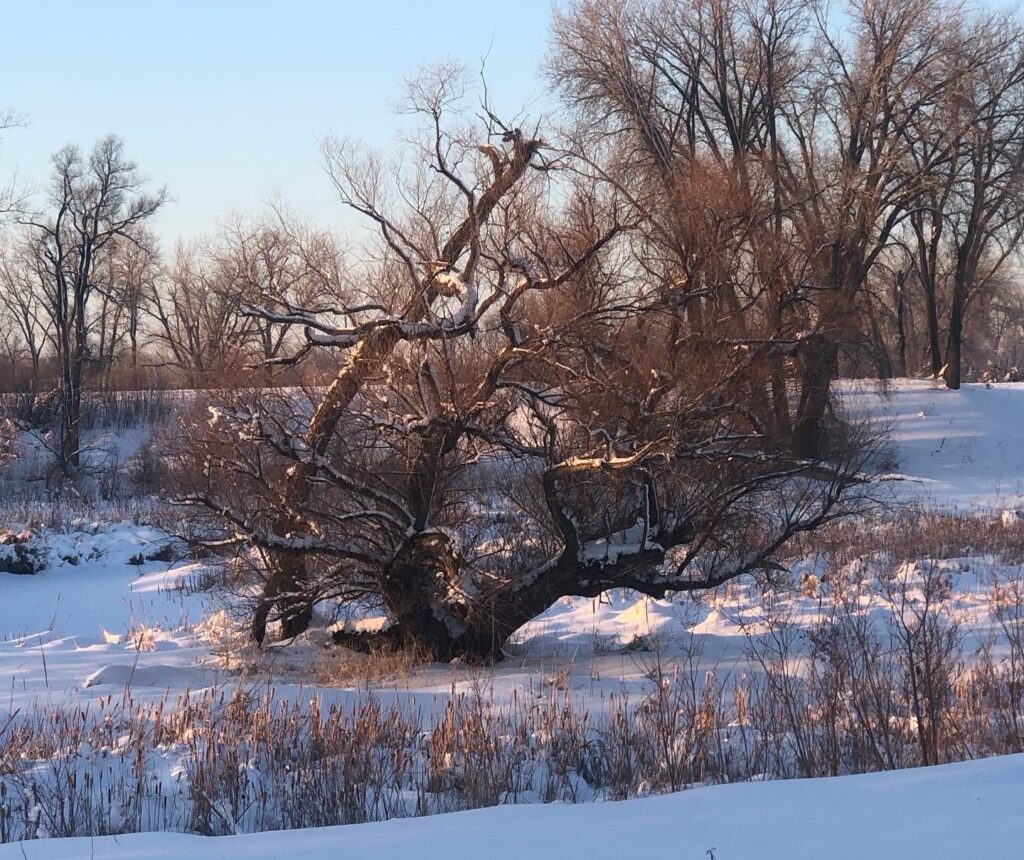
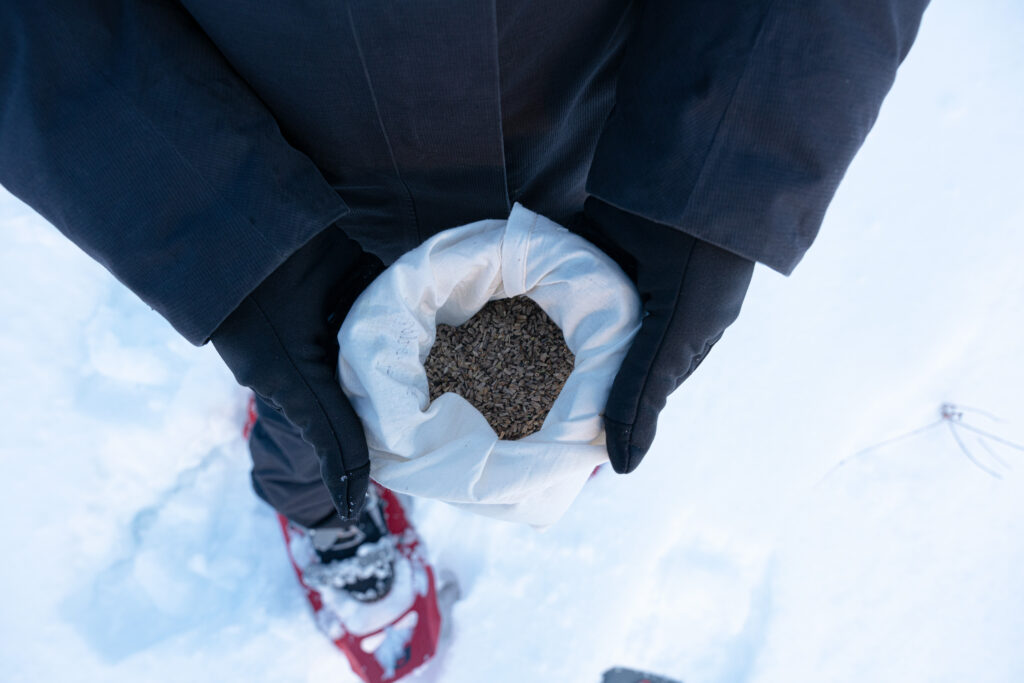
On a recent visit, I brought a big bag of seeds with me and it felt right to again follow deer tracks and winter seed their impressions along the border of the fence. Echinacea purpurea, widely known as purple coneflower, has been used by Indigenous peoples to relieve pain. This act of seeding is not necessarily an ecological restoration, but a minor experiment to see what will grow as well as a ritual to keep coming back to this place.
In this practice, I’m not overwhelmed with policies, chemical data, soil samples, extraction, or economic uses of land. I’m not being advertised to. I’m not buying anything. I’m not taking from, but being with. In “being with,” I’m not completely in fact or thought or concerned about the birds’ futures or massive manipulation of time and space through development or the effects of groundwater contamination beyond human scales of time. I’m feeling a sense of a place by observing and reacting to what happens there, feeling the texture of another existence, connected to my own.
moving toward the oak’s marcescent leaves my breath is visible then hiding before my body passes through it a wet mirror of immersion snow drowned the coneflower i can see its bones, peaking and sighing a v of five swans flew above me i yielded taken out of time as they faded into the pinkish sky in a dream, before the pandemic i walked on a dark road a lonely cinema with open poster cases and a flashing sign “cinema” - “cinema” an empty world stage popped corn crunched beneath my feet with dozens of geese still on the ground their necks made curved drawings i traced them for miles along the asphalt we even dream in landscapes cold air and a varnish scent pushed me off of the thought and back to the winding path is this the dream again? under the pines my heart slows as the sun kisses the thin layer of snow beneath me the soil below it, both death and life enfolding endlessly and again i am mutable
In learning a place, we can never truly know its ins and outs, its history and future. There is a degree of discomfort with that uncertainty, but I yield to the process of following. I see this as the beginning of a relationship to TCAAP that unfolds over time, with minor gestures and collaborations—mostly being with and ultimately advocating for. And yes, as the residential development plans unwind to the public, I will be astute to learn and advocate for what is here now—the birds, deer, the oaks. As the snow melts, I will be there to see what comes up to the sun and then back to the soil in the fall. At this graceful point, there is no motive of taking, of building, monumenting, speeding up time, or a project plan of my own. It is merely an approach to experiencing this place as it shimmers now, and how it reflects a complexity far beyond human comprehension.